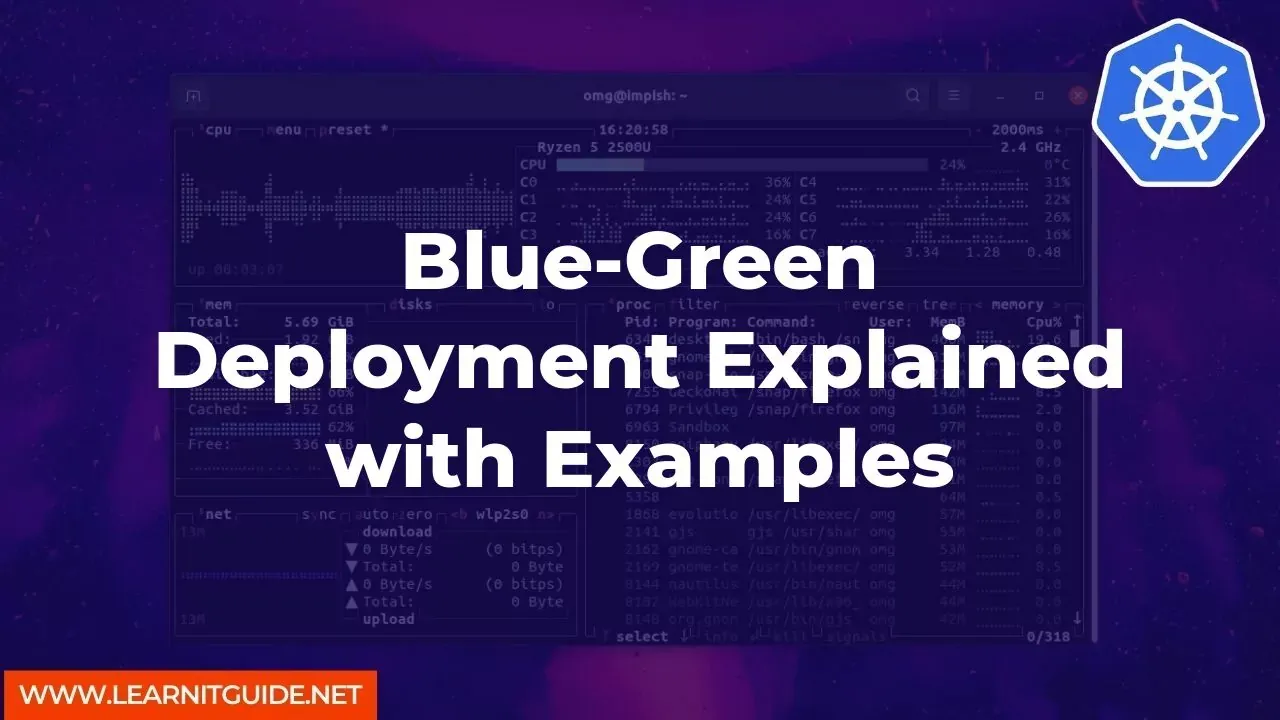Blue-green deployment is a popular software deployment strategy that allows you to update your application without any downtime. In this approach, you create two identical environments, one of which is called blue and the other is green.
You update the green environment with the new version of your application, and then switch traffic to it when you are ready. This approach makes it easy to rollback to the old version if anything goes wrong. In this article, we will explain blue-green deployment in detail and provide some examples to help you understand how it works.
Understanding Blue-Green Deployment
Blue-green deployment is a deployment strategy that uses two identical environments, called blue and green. The blue environment represents the current version of your application, while the green environment represents the new version that you want to deploy. Here are the steps involved in a blue-green deployment:
- Deploy your new application version to the green environment.
- Test your new application version in the green environment.
- Once you have tested your new version and are confident it works as expected, switch traffic to the green environment.
- Once all traffic has been switched to the green environment, you can safely decommission the blue environment.
This approach allows you to update your application without any downtime. If anything goes wrong during the deployment, you can easily switch back to the blue environment, which represents the previous version of your application. This approach makes it easy to rollback to the old version if anything goes wrong.
Examples of Blue-Green Deployment
Here are some examples of blue-green deployment:
- Example 1: Suppose you are running a web application and want to update it to a new version. You can use blue-green deployment to update the application without any downtime. Here are the steps involved:
a. Deploy the new version of your application to the green environment.
b. Test the new version of your application in the green environment.
c. Once you have tested the new version and are confident it works as expected, switch traffic to the green environment.
d. Once all traffic has been switched to the green environment, you can safely decommission the blue environment.
- Example 2: Suppose you are running a database and want to update it to a new version. You can use blue-green deployment to update the database without any downtime. Here are the steps involved:
a. Deploy the new version of your database to the green environment.
b. Test the new version of your database in the green environment.
c. Once you have tested the new version and are confident it works as expected, switch traffic to the green environment.
d. Once all traffic has been switched to the green environment, you can safely decommission the blue environment.
Blue-green deployment is an effective way to update your application without any downtime. This approach uses two identical environments, called blue and green, and allows you to switch traffic to the green environment once you have tested your new version and are confident it works as expected.
This approach makes it easy to rollback to the old version if anything goes wrong during the deployment. We hope this article has helped you understand blue-green deployment and how it works.
Related Searches and Questions asked:
That's it for this post. Keep practicing and have fun. Leave your comments if any.







0 Comments